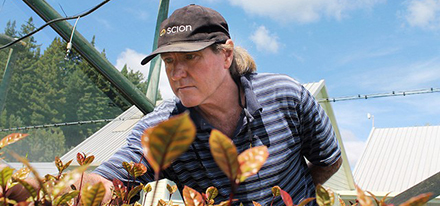
Forestry in New Zealand can trace its beginnings back to the tree nurseries of Whakarewarewa (near Rotorua) established in the late 1800s. In the years that followed, the nursery was home to the first experiments of New Zealand’s young forestry industry. That work went on to set the New Zealand nursery standard for commercial nursery practices and was established as world class. Sources: Timberbiz, Scion
To ensure New Zealand is up to the challenges ahead in forestry and tissue culture science, this year Scion will build the first ‘pilot’ stage of a new nursery, specifically aimed at meeting novel science and commercial challenges in exotic and indigenous forestry.
The future is in high spec, hygienic, mechanised nurseries with high throughput of seedlings and clonal material. The opportunity for indigenous propagation is also significant. Indigenous forestry is now in its infancy, not dissimilar to radiata pine 70 years ago.
“Our aspiration is that the New Zealand forest nursery industry becomes a leaner and more sustainable industry which provides more attractive, skilled work opportunities,” Scion’s Nursery Research Scientist Craig Ford said.
“Ultimately, we aim to facilitate integrated tissue culture and highly automated nursery propagation for exotic forestry into mainstream practice and to carry out more novel science in indigenous forestry.”
The first phase of the Scion Nursery redevelopment will cost around $1 million. It will be a small scale, modular, automated, lean-flow, environmentally sustainable propagation facility.
New facilities will allow Scion to pioneer and showcase more environmentally and economically sustainable production systems through improved ergonomics, hygiene, water, frost and heat management options, and improved growing media and growing container options.
Such facilities will help industry move away from chemicals, plastics, non-sustainable growing media and a reliance on non-renewable energy for heating and lighting. It will use several new-to-New Zealand forest nursery machines and techniques, such as automated paper pot sowing lines and containerised mini-hedge tunnels (mother stock for rooted cutting production of high-value genetic material).
With these facilities, the team will be able to perform climate-controlled seedling and cutting production trials for indigenous and exotic species, and tissue culture hardening, growing and ex-vitro rooting trials.
Construction began in March 2019, and the new facilities will be ready in spring 2019 for the growing season.





